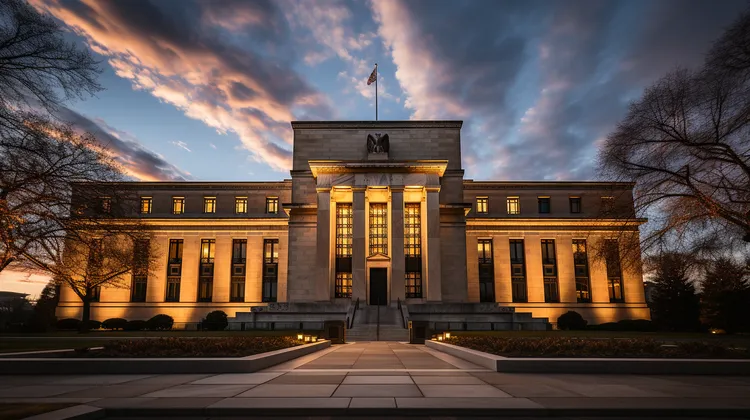The Federal Reserve has recently clarified that its proposed FedNow Service, a real-time payments system, has no relation to the development or implementation of Central Bank Digital Currencies (CBDCs). With the growing interest and discussions surrounding CBDCs across the globe, the clarification comes as a significant distinction.
The Federal Reserve’s FedNow Service is aimed at providing instant, 24/7 payments processing capabilities for individuals and businesses in the United States. It is intended to address the gaps and inefficiencies in the current payment infrastructure, enabling faster and more accessible transactions.
The announcement by the Federal Reserve came after speculations arose that the FedNow Service would be the precursor to the development of a digital U.S. dollar. The Federal Reserve was quick to debunk these assumptions, making it clear that the FedNow Service is not related to the exploration or implementation of a CBDC.
CBDCs are digital versions of fiat currencies issued and regulated by the central bank of a country. These digital currencies are designed to offer the benefits of blockchain technology, such as increased efficiency, transparency, and security, while also providing central banks with greater control over monetary policy.
The Federal Reserve’s clarification aims to emphasize that the FedNow Service is solely focused on enhancing the payment infrastructure in the United States, rather than delving into the realm of central bank-issued digital currencies. It is not part of any broader digital currency strategy being pursued by the Federal Reserve.
The move by the Federal Reserve to emphasize its separation from CBDCs is understandable, given the complexities surrounding the development and implementation of such currencies. CBDCs require careful considerations in terms of cybersecurity, privacy, scalability, and interoperability, among other aspects. The Federal Reserve’s focus on instant payments infrastructure demonstrates its commitment to improving the existing system rather than pioneering a complete shift towards CBDCs.
The clarification is in line with the Federal Reserve’s cautious approach towards the exploration of digital currencies. While acknowledging the potential benefits and risks associated with CBDCs, the Federal Reserve has clearly stated that it is still in the early stages of studying the implications of a digital dollar.
As of now, various nations worldwide, such as China, Sweden, and Canada, are actively researching and piloting CBDCs. These countries see potential in creating digital manifestations of their national currencies, which could promote financial inclusion, streamline cross-border transactions, and ensure better monetary policy transmission.
The Federal Reserve’s clarification brings attention to the fact that the introduction of CBDCs is a multi-faceted decision that requires careful examination and consideration by policymakers. The technological, economic, and regulatory aspects of CBDC implementation are complex and interdependent, making it vital for central banks, including the Federal Reserve, to tread cautiously.
The Federal Reserve’s current priority lies in modernizing the payment infrastructure in the United States to ensure faster and more efficient transactions. The FedNow Service will play a key role in achieving this objective, allowing Americans to make instant payments, irrespective of the time or day.
While the Federal Reserve has stepped up its efforts to enhance the payment infrastructure, the exploration of CBDCs remains an ongoing discussion among central banks worldwide. As the landscape of digital currencies continues to evolve, it is crucial for regulatory bodies to evaluate the potential of CBDCs comprehensively, considering their benefits and challenges.
The Federal Reserve’s clarification stating that the FedNow Service has no relation to CBDCs sheds light on the distinction between its immediate objective of payment infrastructure improvement and the broader concept of central bank-issued digital currencies. By focusing on the development of a real-time payments system, the Federal Reserve ensures that its efforts align with the immediate needs of Americans, while also acknowledging the ongoing discussions surrounding CBDCs.




I’m excited to see how the landscape of digital currencies continues to evolve and how the Federal Reserve plays a role in it.
The FedNow Service’s aim to provide instant payments capabilities is music to my ears!
The FedNow Service is just a distraction from what really matters – the exploration of CBDCs. The Federal Reserve needs to get their priorities straight.
It’s important for central banks to tread cautiously when exploring CBDCs. Thank you, Federal Reserve, for setting an example.
The FedNow Service seems like a missed opportunity to advance our monetary system. We need to be more ambitious.
It’s wise for the Federal Reserve to prioritize the instant payment infrastructure before delving into CBDCs.
The Federal Reserve’s focus on modernizing the payment infrastructure is a step in the right direction for a more inclusive and efficient financial system.
The future of payments is looking brighter with the FedNow Service!
It’s disappointing that the Federal Reserve is not taking a more proactive approach to CBDCs. Other countries are way ahead in this area.